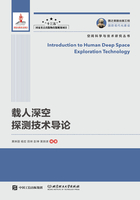
Preface
Compared with a hundred years ago, our understanding of the major celestial bodies in the solar system has enriched a lot.Today's international developments of Planetary Sciences and Exploration mainly address six scientific“big questions”: how did the solar system form and how did it evolve towards its current configuration? How does it work? What produced the diversity of its objects? How do our planetary systems(the solar system and the four giant planets systems)compare to extraterrestrial planetary systems? Where can we find habitable worlds and what were the conditions leading to their emergence? Is there life anywhere, and how to find it? With the deepening of human understanding of the major celestial bodies in the solar system and the development of comparative planetary science, our understanding of Earth, our own planet and the fragile harbor of humankind's life and destiny, is also more profound.We know that, as the Sun evolves and progressively burns all its hydrogen fuel, within about 5 billion years it will eventually turn into a red giant.Our Earth will become an unhabitable furnace before being“eaten”by the Sun's expanding corona.Even if this perspective is very far ahead, much farther than the age of our own species and of Earth life itself, it must encourage us, fragile human beings inhabiting the Earth, our cradle and provisional shelter, not only to cherish and preserve it, but also to better understand its place in the cosmos, dare explore the universe around it, find other habitable planets and wonder if they are inhabited.Along this path we might well, in the end, realize the dream of human migration to other extraterrestrial worlds!We are probably the precursors of inhabitants of our Earth which can start thinking rationally about this dream and gather the scientific and technical knowledge needed to make it happen in the coming decades to centuries, under the guidance of generations of astronomers and aerospace engineers to come.
The development of the technologies needed for human deep space exploration requires unmanned deep space exploration as a pilot task and source of the basic knowledge needed, and relies on the use of manned space stations to verify the longterm viability of human beings in space. The nearest destination of humankind is the moon. In the future, shall we reach out farther to Mars and beyond? How can we do it? How can humans adapt to the environment of long deep space flight? How can we overcome the harsh natural environments of the moon, Mars and other celestial bodies?How can we make use of the resources of extraterrestrial objects to establish a longterm presence of humans on these hostile worlds? These are very forward-looking and challenging subjects which the authors of this book have thought deeply and professionally about. Their research results will lay the foundation for the real implementation of future exploration projects, and will also inspire the future generations who will meet this great challenge by devoting themselves to the important basic research required.
The universe is like a vast ocean, the moon is like a reef off the coast, and human beings are right now like children picking up shellfish on the shore. There are many jewels in the deep universe waiting for us to explore and discover. . . The first step of human migration to extraterrestrial bodies will likely be the moon, this“offshore reef”where a“lunar village”might be established, following ESA's vision of the first extraterrestrial human settlement.
On the occasion of the successful launch of the first Sino- French oceanography satellite, CFOSAT, I am glad and honored to accept the invitation of Professor Guo Linli of the Chinese Academy of Space Technology to write this preface to her wonderful book, and I hope that it will inspire future joint journeys of China, France and other countries towards still unexplored planetary worlds.

Michel Blanc
Institut de Recherche en Astrophysique et Planétologie(IRAP),
Observatorie Midi-Pyrénées(OMP), France
Interdisciplinary Scientist on the CASSINI-HUYGENS Mission
Co-Leader on NASA's Juno Mission to Jupiter
Full Member of the International Academy of Astronautics(IAA)
Full Member of the Academia Europaea
Full Member of the Air and Space Academy, France
February 21st, 2019